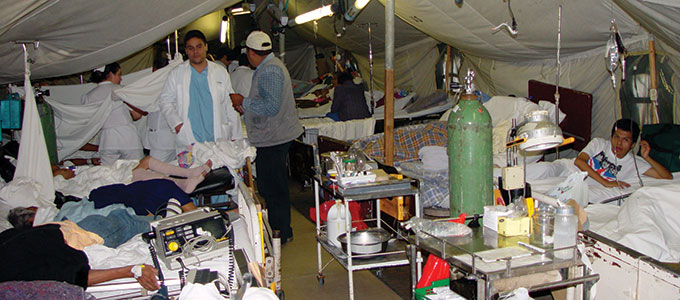
Strengthening classification and coordination mechanisms for emergency medical teams in disaster response
F
ollowing the January 2010 earthquake in Haiti, a large number of medical teams arrived on site and lives were saved. Despite this laudable humanitarian response, too many medical teams arrived unprepared. In December of that year, PAHO/WHO convened an expert meeting in Cuba to identify the minimum requirements and streamline the application process, acceptance and coordination of international medical teams in order to improve efficiency and speed up their deployment. Read the full report at: http://bit.ly/25FbLQN.
That meeting set the groundwork for the global initiative now known as ‘Emergency Medical Teams.’ These teams are composed of health professionals (medical staff, nurses, physiotherapists, paramedics, etc.) that provide direct care to disaster-affected populations and also support local health systems. They work under global guidelines that define the minimum standards and requirements for the teams. Consult these guidelines at http://bit.ly/1SNgc5V.
In the Americas, a Plan of Action for the Coordination of Humanitarian Assistance (click on http://bit.ly/1rr26aL and scroll down to document CD53/12 in the section on Working Documents) guides the countries’ work in this important area:
- Preparing procedures for requesting, accepting and receiving EMTs.
- Coordinating the integration of EMTs into health EOCs.
- Maintaining a regional roster of EMT coordinators, forming national-level EMTs, and developing mechanisms to register both national and international teams.
- Streamlining immigration, customs and logistics procedures to facilitate the deployment of EMTs.
- Supporting national and regional workshops for EMT coordination.
Most recently, in December 2015, 150 participants from governments (more than 30 Member States); civil society and the private sector (over 40 teams); and international organizations met for a global meeting in Panama to discuss a number of issues relating to the current implementation and ongoing development of the EMT initiative. Read the report of this meeting at: http://bit.ly/1SVHXJG. Follow the latest news on EMTs on Twitter, at #EMTAMERICAS and on the web at www.paho.org/disasters/emt.
